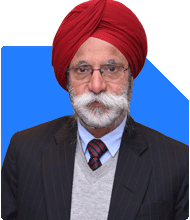I am 22 years old with a monthly salary of 36 thousand in hand after deductions i have a health insurance of 5 lacks and for both parents 3 lacks and a family loan of 17 lacks in total. Epf of 40 thousand. My monthly living expenses are around 20 thousand and how can i clear the loans, can it be done by investing, kindly guild me.
Ans: Congratulations on starting your financial journey at such a young age. It’s commendable that you are thinking about clearing loans and planning your investments early. With proper planning and disciplined execution, you can achieve your financial goals. Let's analyze your current situation and explore potential strategies to help you manage and clear your loans effectively.
Understanding Your Financial Position
Let's break down your current financial position:
Monthly salary: Rs 36,000
Health insurance: Rs 5 lakhs
Parents' health insurance: Rs 3 lakhs
Family loan: Rs 17 lakhs
EPF: Rs 40,000
Monthly expenses: Rs 20,000
Assessing Your Loan Situation
Your total family loan stands at Rs 17 lakhs. It's essential to understand the interest rates, tenure, and monthly EMIs for these loans. This will help us determine the best strategy for repayment.
Budgeting for Loan Repayment
You have a monthly income of Rs 36,000 and expenses of Rs 20,000, leaving you with Rs 16,000. This surplus can be utilized for loan repayment and investments.
Creating a Repayment Strategy
Prioritize High-Interest Loans:
Identify which loans have the highest interest rates. Prioritize paying these off first to reduce your overall interest burden.
Debt Consolidation:
If you have multiple loans with varying interest rates, consider consolidating them into a single loan with a lower interest rate. This can simplify your repayments and potentially reduce your interest costs.
Increase EMI Payments:
If possible, increase your monthly EMI payments. This will help you clear the loans faster and save on interest payments.
Emergency Fund
Before aggressively paying off your loans, ensure you have an emergency fund in place. This should cover at least 3-6 months' worth of living expenses. Given your monthly expenses are Rs 20,000, aim for an emergency fund of Rs 60,000 to Rs 1,20,000. This will provide a safety net in case of any unforeseen expenses or loss of income.
Investing While Repaying Loans
Investing while repaying loans can seem challenging, but it’s possible with careful planning.
Start Small:
Begin with a small portion of your surplus, say Rs 5,000 per month. This can be increased as you gain more control over your finances.
Systematic Investment Plan (SIP):
Invest in mutual funds through SIPs. This allows you to invest a fixed amount regularly and benefit from rupee cost averaging.
Diversify Your Investments:
Allocate your investments across different asset classes such as equity and debt. This balances risk and potential returns.
Benefits of Actively Managed Funds
While index funds may seem attractive due to lower fees, actively managed funds offer several advantages:
Expert Management:
Actively managed funds are handled by professional fund managers who make investment decisions based on research and market conditions.
Potential for Higher Returns:
These funds aim to outperform the market index, offering the potential for higher returns.
Flexibility:
Fund managers can adjust the portfolio in response to market changes, potentially reducing risk.
Disadvantages of Direct Funds
Investing in direct funds may seem cost-effective but has drawbacks:
Lack of Guidance:
Direct funds don’t provide access to professional advice, which can be crucial for making informed investment decisions.
Time and Effort:
Managing your own investments requires significant time and effort to research and monitor the market.
Potential for Mistakes:
Without expert guidance, there is a higher risk of making poor investment decisions.
The Importance of Professional Guidance
Working with a Certified Financial Planner (CFP) can offer several benefits:
Personalized Advice:
A CFP can provide tailored advice based on your financial goals, risk tolerance, and current situation.
Holistic Planning:
They consider all aspects of your financial life, including loans, investments, insurance, and retirement planning.
Regular Reviews:
A CFP can help you regularly review and adjust your financial plan to stay on track.
Steps to Clear Loans and Build Wealth
Create a Detailed Budget:
Track your income and expenses meticulously. This will help you identify areas where you can cut back and allocate more towards loan repayment and investments.
Automate Savings and Investments:
Set up automatic transfers for loan EMIs, savings, and investments. This ensures consistency and prevents the temptation to spend surplus money.
Monitor Your Progress:
Regularly review your loan balances and investment portfolio. Celebrate small milestones to stay motivated.
Increase Income:
Look for opportunities to increase your income, such as taking on freelance work, pursuing additional qualifications, or seeking a higher-paying job.
Avoid New Debt:
Refrain from taking on new debt unless absolutely necessary. This will help you focus on clearing existing loans faster.
Maintaining a Balanced Approach
While it’s important to focus on clearing your loans, don’t neglect your investments. A balanced approach ensures you’re not only reducing debt but also building wealth for the future.
Reviewing Insurance Coverage
Your current health insurance covers Rs 5 lakhs for yourself and Rs 3 lakhs for your parents. Ensure this coverage is adequate for potential medical emergencies. If necessary, consider increasing your coverage or adding critical illness insurance.
Exploring Tax Benefits
Take advantage of tax deductions available on loan interest payments and investments. This can reduce your taxable income and increase your savings.
Communicate with Family
Discuss your financial goals and repayment strategy with your family. Their support and understanding can make the journey smoother.
Final Insights
Your financial journey is off to a great start. With disciplined budgeting, strategic loan repayment, and smart investing, you can achieve your goals. Stay committed, seek professional guidance when needed, and regularly review your progress.
Best Regards,
K. Ramalingam, MBA, CFP,
Chief Financial Planner,
www.holisticinvestment.in





















